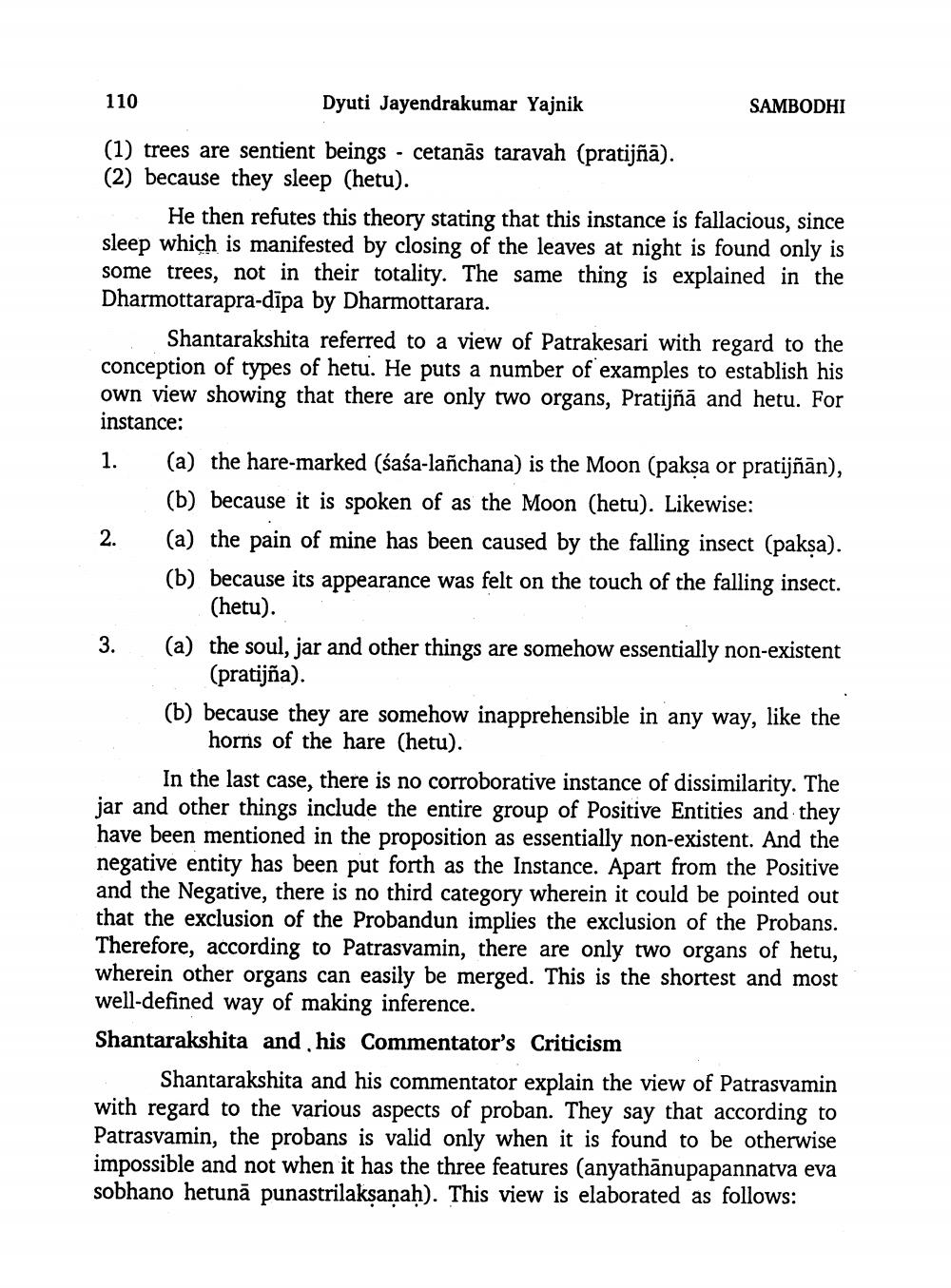________________
110
Dyuti Jayendrakumar Yajnik
SAMBODHI
(1) trees are sentient beings - cetanās taravah (pratijñā). (2) because they sleep (hetu).
He then refutes this theory stating that this instance is fallacious, since sleep which is manifested by closing of the leaves at night is found only is some trees, not in their totality. The same thing is explained in the Dharmottarapra-dipa by Dharmottarara.
Shantarakshita referred to a view of Patrakesari with regard to the conception of types of hetu. He puts a number of examples to establish his own view showing that there are only two organs, Pratijñā and hetu. For instance: 1. (a) the hare-marked (śaśa-lañchana) is the Moon (paksa or pratijñān),
(b) because it is spoken of as the Moon (hetu). Likewise: 2. (a) the pain of mine has been caused by the falling insect (paksa).
(b) because its appearance was felt on the touch of the falling insect.
(hetu). 3. (a) the soul, jar and other things are somehow essentially non-existent
(pratijña). (b) because they are somehow inapprehensible in any way, like the
horns of the hare (hetu).
In the last case, there is no corroborative instance of dissimilarity. The jar and other things include the entire group of Positive Entities and they have been mentioned in the proposition as essentially non-existent. And the negative entity has been put forth as the Instance. Apart from the Positive and the Negative, there is no third category wherein it could be pointed out that the exclusion of the Probandun implies the exclusion of the Probans. Therefore, according to Patrasvamin, there are only two organs of hetu, wherein other organs can easily be merged. This is the shortest and most well-defined way of making inference. Shantarakshita and his Commentator's Criticism
Shantarakshita and his commentator explain the view of Patrasvamin with regard to the various aspects of proban. They say that according to Patrasvamin, the probans is valid only when it is found to be otherwise impossible and not when it has the three features (anyathānupapannatva eva sobhano hetunā punastrilaksanah). This view is elaborated as follows:




